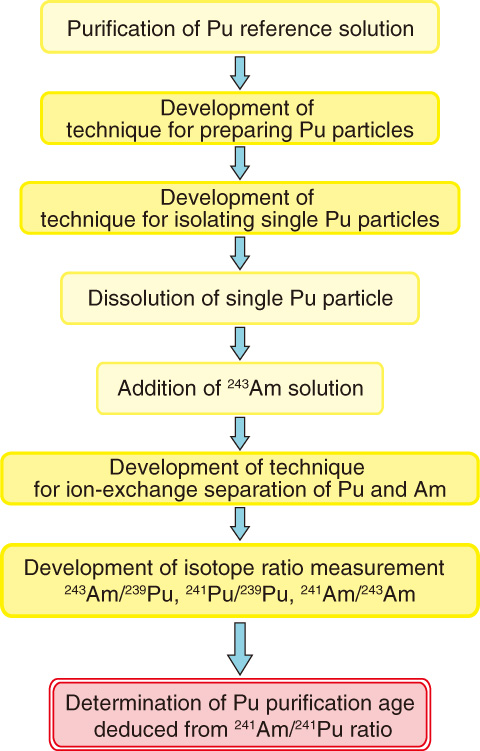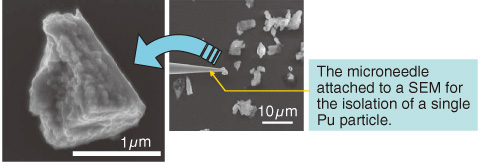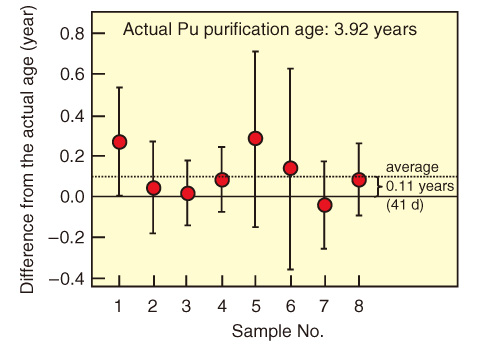
Fig.8-18 Development of analytical procedure for Pu purification age determination

Fig.8-19 Pu particles prepared from a Pu reference solution

Fig.8-20 Pu purification age of single Pu particles determined by 243Am spike method
Inspectors from the International Atomic Energy Agency (IAEA) take an environmental sample such as dust by wiping the floors in a nuclear facility, and the amount and isotopic composition of ultra-trace (10-15-10-12 g) uranium (U) and plutonium (Pu) are analyzed to detect undeclared nuclear activities.
We developed a technique for isolating a single Pu particle and an analytical technique for the precise determination of the Pu purification age to upgrade the methods used to manage nuclear materials in Japan (Fig.8-18). The Pu purification age is evaluated by measuring the americium-241 (241Am)/241Pu atomic ratio precisely. A single Pu particle of ultra-trace amount (<10-12 g) should be analyzed because Pu of different origins may be mixed in a sample. 241Am and 241Pu must be chemically separated before they are subjected to mass spectrometry because they have the same atomic mass and cannot be separated with a mass spectrometer. The known techniques cannot provide the precise age of young Pu samples or ultra-trace samples because of the low 241Am/241Pu atomic ratio. It is also necessary to prepare a reference sample of young single Pu particles for evaluating the accuracy and precision of our analytical results. We developed the following techniques: the preparation of micron-diameter Pu oxide particles (Fig.8-19) from Pu purified by ourselves; a technique for isolating a single Pu particle by a microneedle attached to a scanning electron microscope (SEM); and chemical separation and isotope measurement of ultra-trace Pu and Am.
Precise measurement of the 241Am/241Pu ratio in a single Pu particle of 10-12 g was achieved. Each Pu particle was dissolved and spiked with pure 243Am. The 241Am/241Pu ratio was obtained from the 243Am/239Pu ratio of a sample solution and the isotope ratios of Pu and Am in the chemically separated fractions. These ratios were measured with an inductively coupled plasma mass spectrometer. The determined age was in good agreement with the actual age (3.92 years), with a difference of 0.11 years (41 d) on average (Fig.8-20). By using this analytical technique, traces of nuclear activity can be detected. We can contribute to the IAEA safeguard activity by analyzing samples with our excellent techniques.
The present study was sponsored by the Ministry of Education, Culture, Sports, Science and Technology of Japan (MEXT).